#Baltimore harbour
Text
Holy shit.
The whole bloody thing is in the water!
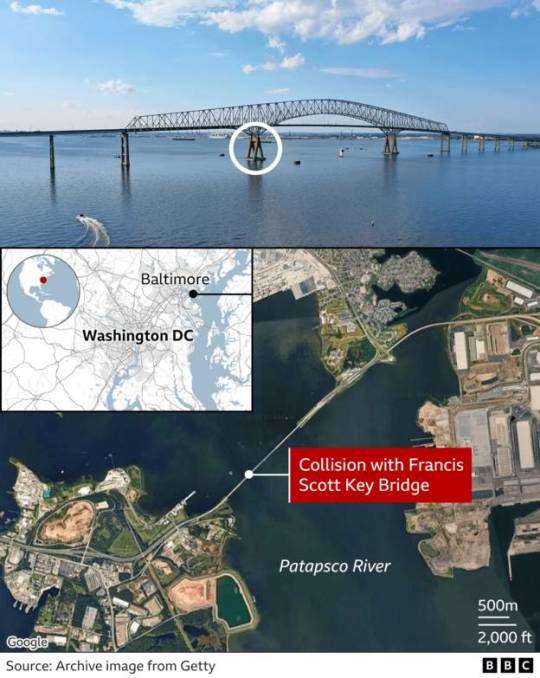
Got hit by a massive container ship.
Fucking hell.
I hope nobody was on the damn thing when it collapsed.
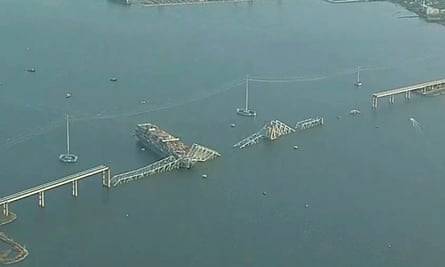
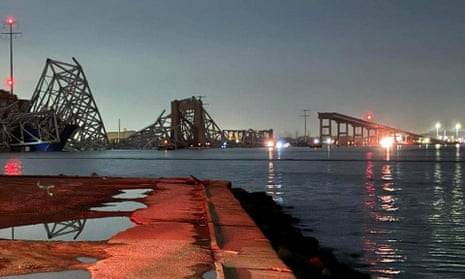

Look at it!

It’s GONE!
Fuck.
What’s that?
They already changed the wording on its Wikipedia page?

Jesus Christ wikipedia!
You fuckers really do work fast!
Oh my GOD!
I’m not trying to sensationalise this btw.
I just wasn’t expecting it.
I’m not anticipating such incidents like some ghastly disaster-worshipping ghoul with issues.
I just hope nobody was hurt or killed.
I also worry that the conspiracy nuts will try saying it was faked or some crap. Fuck that shit!
#dougie rambles#personal stuff#news#maryland#bridge#bridges#bridge collapse#crash#cargo ship#what#fucking hell#wikipedia#Baltimore#river#Francis Scott key bridge#patapsco river#beltway bridge#key bridge#Baltimore harbour#container ship#container shipping#editors#bloody hell#dali#singapore#disaster#shitshow#maersk
105 notes
·
View notes
Photo

#FellsPoint #Baltimore #harbour #seafront #sunset #reflections #Maryland #America #USA (at Fells Point Harbour) https://www.instagram.com/p/ClPoHdHNm98/?igshid=NGJjMDIxMWI=
4 notes
·
View notes
Text


Stores of the Year 6 (1991) Martin M. Pegler
The White House, Harbour Place, Baltimore, MD
Johnson & BErman, Baltimore
#Stores of the Year 6#Martin M. Pegler#1991#store interior#interior design#mall#retail design#department store#90s interior#90s design#retro#vintage#90s store
112 notes
·
View notes
Text
Le cargo Dali, qui a provoqué l’effondrement du pont mardi 26 mars 2024 à Baltimore, est un porte-conteneurs récent battant pavillon de Singapour. Construit par les chantiers du coréen Hyundai en 2015, il est long de 300 mètres pour 48 mètres de largeur, 24,8 mètres de hauteur et 15 mètres de tirant d’eau. Il est de taille moyenne pour ce type de navire 95 000 tonneaux de jauge brute. Le navire était parti du port de Baltimore mardi à 1 heure du matin pour une traversée de près d’un mois jusqu’au port de Colombo, au Sri Lanka, selon le site Marine Traffic. Il a heurté le pont à 1 h 28 heure locale

Inauguré en 1977 après cinq années de construction, le pont Francis Scott Key doit son nom au poète amateur et auteur de l’hymne national américain, « The Star-Spangled Banner ». Également connu sous le nom de Outer Harbour Bridge, il fait une longueur totale de 2,6 km et est situé à 56 m au-dessus de la rivière. Il s’agit d’un pont en treillis continu, c’est-à-dire un pont dont les poutres latérales sont composées de barres métalliques triangulées et assemblées en treillis, une technique de construction apparue aux États-Unis. C’est suite à l’augmentation constante du trafic à Baltimore dans les années 1970, que le maire de l’époque a lancé l’idée de faire construire un pont à quatre voies pour compléter la boucle d’un tronçon majeur de la ville. C'est deux fois deux voies qui fait en effet partie de l’Interstate 695, ce périphérique qui entoure la ville de Baltimore
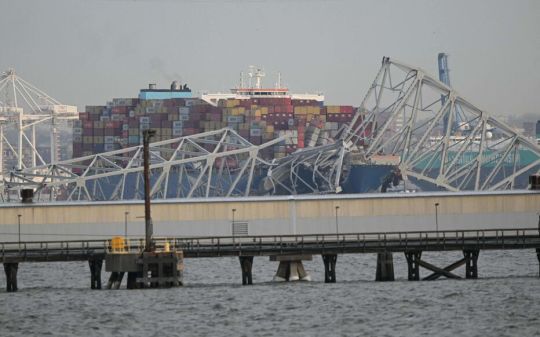
5 notes
·
View notes
Link
https://kejafi.com/
https://www.facebook.com/kejafi/
https://kejafi.bandcamp.com/album/the-road
0 notes
Video
youtube
Lives Could have been saves in Francis Scott Key Bridge Collapse in Balt... Many Canadian Bridges Also Unprotected From Ship Collisions and Potential Collapse The Vancouver company designing the AIIMS (Accidental Infrastructure Impact Avoidance System) says their Hybrid software and hardware technology would not have been able to prevent the Baltimore Bridge Collision but could have offered more warning and stopped traffic on the bridge before the collapse. Although the system is not ready for launch yet, it is coming and could be used to prevent or mitigate damages and injuries for land and water-based collisions with infrastructure including bridges, tunnels, buildings etc. Most importantly it can save lives by early detection of potential pending impacts and activating the system's automated warnings to stop surrounding traffic earlier than other means of doing so. The Province of BC has been rejected from the ability to use the system as they showed interest and scheduled preliminary meetings with the company but failed to show up for scheduled meetings with the company and no courtesy of notification to the company of non-attendance. The company had made special arrangements for the Government of BC to help provide solutions after a large number of impacts with highway overpasses in BC to save lives in the home province of the company. The AIIMS Technology can not only help protect lives and infrastructure but also prevent environmental disasters.
For More About The AIIMS Technology https://www.youtube.com/watch?v=UXzUBKHj-24
Contact PPCM AI Tech propicscanada@ gmail. com #highways #commecialtransportation #nationalhighway #highwaysafety #CommercialTransportation #trucking #truckingsafety #infrastructure #collisions #accidentprevention #HighwayssafetyAuthority #TransportationSafetyBoard #tsb #Highwaysdepartment #departmentoftransportation #CVSE #shipping #water #sea #Accidents #bridge #bridges #baltimorebridge #baltimore #baltimorebridgecollapse #bridgecollapse #BridgeSafety #tunnels #cargoship #cruiseships #tankerships #tanker #shipping #ntsb @NTSBgov @CNN @FoxNews @ABCNews @abcnewsaustralia @aljazeeraenglish @News24thinkfirst #harbour #commecialtransportation
#youtube#Many Canadian Bridges Also Unprotected From Ship Collisions and Potential Collapse The Vancouver company designing the AIIMS (Accidental In
0 notes
Text
How the Baltimore Key Bridge collapsed: experts break down the perfect storm of errors
The latest headlines from our reporters across the US sent straight to your inbox each weekday
Your briefing on the latest headlines from across the US
The Dali set out from the Port of Baltimore around 1am on Tuesday, a local pilot manoeuvring the container ship towards open waters after two days in the harbour in preparation for its next sail to Sri Lanka. The 948-foot vessel edged closer to…

View On WordPress
0 notes
Text
Francis Scott Key Bridge: Historical significance of this engineering marvel of the 1970s
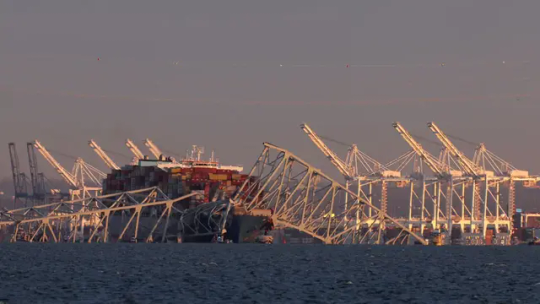
New Delhi: A cargo ship rammed into a significant bridge in Baltimore in the US, causing it to snap in a few places and plunge into the river below. Several vehicles on the bridge fell into the chilly waters, and rescuers searched for the people. Two people have been pulled out from the waters under the Francis Scott Key Bridge, and one of them is in serious condition. The ship seems to have crashed into one of the bridge’s supports. In this article, we learn more about the bridge and its significance.
The view of the bridge collapse (Photo credit: Getty Images)
Francis Scott Key Bridge
Before understanding the bridge’s history, let us know its exact location. The bridge, just 47 years old, was 8,636 feet long and spanned the Patapsco River (a river in central Maryland that flows into the Chesapeake Bay).
What is the history of the Francis Scott Key Bridge?
Background
The panning of the bridge began in the early 1970s when the traffic started to overflow the Baltimore Harbor Tunnel (through which Interstate 695 crosses the harbour).
History
The Francis Scott Key Bridge was named after the American lawyer Francis Scott Key, who wrote the lyrics to the national anthem. Construction began in 1972, took five years, and was completed in March 1977.
The bridge was considered an engineering marvel, and its construction was regarded as “a major milestone in Maryland’s transportation planning”.
As per Preservation Maryland, a nonprofit dedicated to protecting historical sites, the bridge was hailed as “a significant engineering accomplishment”.
Historical importance
According to the Maryland Transportation Authority, the bridge is believed to have witnessed British ships bombarding Fort McHenry, which became the bridge’s site in September 1814.
According to the Maryland Center for History and Culture, this event inspired Francis Scott Key to write the lyrics of the poem “Defense of Fort McHenry”, which was later renamed “The Star-Spangled Banner”. In 1931, the poem officially became the national anthem.
Construction cost
The New York Times reported that when the bridge opened, the construction costs totalled $141 million, roughly $735 million in today’s dollars.
Traffic
Maryland state government reported that in 2023, over 12.4 million passenger and commercial vehicles crossed the bridge. After the collapse, the vehicles are being rerouted. Since its opening, the bridge has undergone renovation several times. This included a $14 million project in 1986 to repair damage, improve safety, and restore the bridge’s appearance.
Toll
The bridge was a toll facility operated by the Maryland Transportation Authority (MDTA), and the rate for cars was $4.00.
What were the characteristics of the bridge?
Design: Steel arch-shaped continuous through truss bridge
Material: Steel
Total length: 8,636 feet
Longest span: 1,200 feet
Clearance above: 185 feet
Read the full article
1 note
·
View note
Text
Europeans were also enslaved by North Africans, you mean white slaves?
Europeans were also enslaved by North Africans, you mean white slaves? Sounds like Africa snatched up whatever they thought they could sell, especially Christians. WAIT! Does Africa owe me Reparations?
The coasts of Valencia, Andalusia, Calabria and Sicily were so often raided that “there was no one left to capture”. Historians estimate as high as 1,250,000 captives were enslaved from 1530 - 1780. Was the Northern part of Africa built on the backs of white, European, Christians? Maybe it’s time to “rethink our belief that race was fundamental to pre-modern ideas” of slavery.
Direct Quotes:
The fishermen and coastal dwellers of 17th-century Britain lived in terror of being kidnapped by pirates and sold into slavery in North Africa. Hundreds of thousands across Europe met wretched deaths on the Barbary Coast in this way.
In the first half of the 1600s, Barbary corsairs - pirates from the Barbary Coast of North Africa, authorised by their governments to attack the shipping of Christian countries - ranged all around Britain's shores.
Admiralty records show that during this time the corsairs plundered British shipping pretty much at will, taking no fewer than 466 vessels between 1609 and 1616, and 27 more vessels from near Plymouth in 1625.
Considering what the number of sailors who were taken with each ship was likely to have been, these examples translate into a probable 7,000 to 9,000 able-bodied British men and women taken into slavery in those years.
Not content with attacking ships and sailors, the corsairs also sometimes raided coastal settlements, generally running their craft onto unguarded beaches, and creeping up on villages in the dark to snatch their victims and retreat before the alarm could be sounded. Almost all the inhabitants of the village of Baltimore, in Ireland, were taken in this way in 1631
how they eat nothing but bread and water.... How they are beat upon the soles of the feet and bellies at the Liberty of their Padron. How they are all night called into their master's Bagnard, and there they lie.'
According to observers of the late 1500s and early 1600s, there were around 35,000 European Christian slaves held throughout this time on the Barbary Coast - many in Tripoli, Tunis, and various Moroccan towns, but most of all in Algiers.
The unfortunate southerners were sometimes taken by the thousands, by slavers who raided the coasts of Valencia, Andalusia, Calabria and Sicily so often that eventually it was said that 'there was no one left to capture any longer'.
On this basis it is thought that around 8,500 new slaves were needed annually to replenish numbers - about 850,000 captives over the century from 1580 to 1680.
for the 250 years between 1530 and 1780, the figure could easily have been as high as 1,250,000 - this is only just over a tenth of the Africans taken as slaves to the Americas from 1500 to 1800, but a considerable figure nevertheless. White slaves in Barbary were generally from impoverished families, and had almost as little hope of buying back their freedom as the Africans taken to the Americas: most would end their days as slaves in North Africa, dying of starvation, disease, or maltreatment.
Slaves in Barbary fell into two broad categories. The 'public slaves' belonged to the ruling pasha, who by right of rulership could claim an eighth of all Christians captured by the corsairs
These slaves were housed in large prisons known as baños (baths), often in wretchedly overcrowded conditions. They were mostly used to row the corsair galleys in the pursuit of loot (and more slaves) - work so strenuous that thousands died or went mad while chained to the oar.
During the winter these galeotti worked on state projects - quarrying stone, building walls or harbour facilities, felling timber and constructing new galleys. Each day they would be given perhaps two or three loaves of black bread - 'that the dogs themselves wouldn't eat' - and limited water; they received one change of clothing every year. Those who collapsed on the job from exhaustion or malnutrition were typically beaten until they got up and went back to work.
selling water or other goods around town on his (or her) owner's behalf. They were expected to pay a proportion of their earnings to their owner - those who failed to raise the required amount typically being beaten to encourage them to work harder.
As they aged or their owner's fortunes changed, slaves were resold, often repeatedly. The most unlucky ended up stuck and forgotten out in the desert, in some sleepy town such as Suez, or in the Turkish sultan's galleys, where some slaves rowed for decades without ever setting foot on shore.
Many slaves converted to Islam, though, as Morgan put it, this only meant they were 'freed from the Oar, tho' not from [their] Patron's Service.' Christian women who had been taken into the pasha's harem often 'turned Turk' to stay with their children, who were raised as Muslims.
Slaves in Barbary could be black, brown or white, Catholic, Protestant, Orthodox, Jewish or Muslim. Contemporaries were too aware of the sort of people enslaved in North Africa to believe, as many do today, that slavery, whether in Barbary or the Americas, was a matter of race. In the 1600s, no one's racial background or religion automatically destined him or her for enslavement. Preachers in churches from Sicily to Boston spoke of the similar fates of black slaves on American plantations and white slaves in corsair galleys; early abolitionists used Barbary slavery as a way to attack the universal degradation of slavery in all its forms.
This may require that we rethink our belief that race was fundamental to pre-modern ideas about slavery. It also requires a new awareness of the impact of slave raids on Spain and Italy - and Britain - about which we currently know rather less than we do about slaving activities at the same time in Africa. The widespread depopulation of coastal areas from Malaga to Venice, the impoverishment caused by the kidnapping of many breadwinners, the millions paid by the already poor inhabitants of villages and towns to get their own people back - all this is only just beginning to be understood by modern-day historians.
0 notes
Link
0 notes
Text


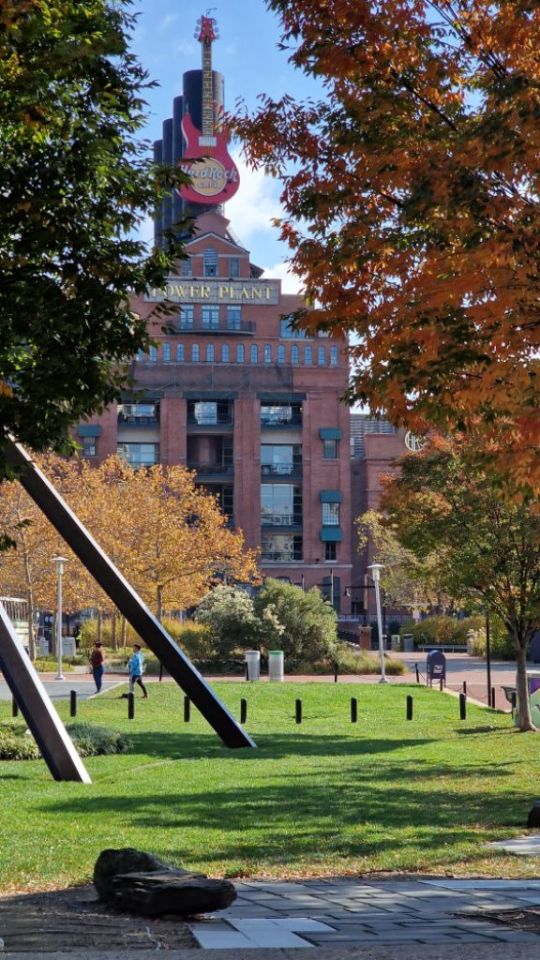

Mi., 1.11., Baltimore (2. Tag)
"Idyllischer" Liegeplatz direkt am Highway bei spätherbstlichen Temperaturen im einstelligen Bereich. Zu Fuß ins 5km entfernte Zentrum (Inner Harbour), muss im Sommer dort ganz nett sein ...
0 notes
Text
Baltimore's bustling harbour and varied neighbourhoods, each with an own personality, are part of the city's attractiveness. When it comes to Best Braid Gel In Baltimore, the substance is praised for its robust hold, which guarantees that each braid is flawless. Additionally, because of its non-residual nature, your hair won't clump, which is a common complaint about many hair gels.
0 notes
Link
0 notes
Text
Virus particles often hide in “immunoprivileged sites” around the human body, also sometimes called sanctuary sites, that our immune systems don’t monitor or protect as closely as the rest of our bodies. These include the brain, spinal cord, pregnant uterus, testes, and eyes, for which damage by immune cells would be highly problematic. The testes can harbour Zika and Ebola viruses, for example.
04 July 2023
Over the past 20-30 years laboratory measurements have become sensitive enough to pick up on viral RNA outside the known sanctuary locations.
“We were surprised to find that this was common in measles—its main site of persistence is lymphoid tissue,” says Diane Griffin, a microbiologist and immunologist at Johns Hopkins Bloomberg School of Public Health in Baltimore, Maryland. “Anybody who looks will now find RNA persistent, probably, after acute virus infection.” Such signs have been found in blood, joints, the respiratory tract, gastrointestinal tissues, and kidneys.
How long can viruses hide for?
It varies. Griffin’s team has also found measles RNA months later than it was previously recognised, after the infectious virus has been cleared.
A low level of immune activity in sanctuary sites usually keeps the viruses under control without killing the cells. And sometimes—especially outside sanctuary sites—the immune system can clear the virus but leave its genetic material behind to reproduce later, known as a “latent” virus. For example, antibodies in the brain may suppress viral RNA production without harming infected neurons.
There are more than a dozen viruses that can become latent, of which Epstein-Barr virus is one of the most common, infecting as much as 90% of the human population. After an initial Epstein-Barr infection, the remaining viral RNA can lead to later disease and asymptomatic viral shedding.
(...)
Transmission can take place months or even years after recovery from acute disease, potentially enabling spread to new geographical regions. As one potential example, in 2021 in Guinea, an Ebola survivor had a recurrence of acute illness one year after their initial infection. This led to community infection and triggered a “new” outbreak. This, says Griffin, is an example of evolving understanding about what persistence means in Ebola and the potential public health and long term consequences.
She also points out that some viruses such as Ebola and Zika don’t have a known latent phase, yet “we know people where, six months after recovery, you get transmission of Zika, or Ebola, or reactivation of problems . . . That means that full length RNA is there and can resume production.”
Can different variants hide for longer?
Sometimes. Viruses often evolve so that they avoid inducing innate immune responses, helping them replicate and survive longer inside cells. These are variants that are less likely to burst cells open, or that can limit or prevent the expression of proteins that make them recognisable by antibodies, or both.
Griffin notes that such variants may not be so readily transmitted. She highlights the fatal brain infection subacute sclerosing panencephalitis, which occurs seven to 10 years after a measles infection. “That virus is highly mutated by that time,” she says. “There is a good immune response, but the immune response does no good. It’s not capable of getting rid of those cells.”
(...)
0 notes
